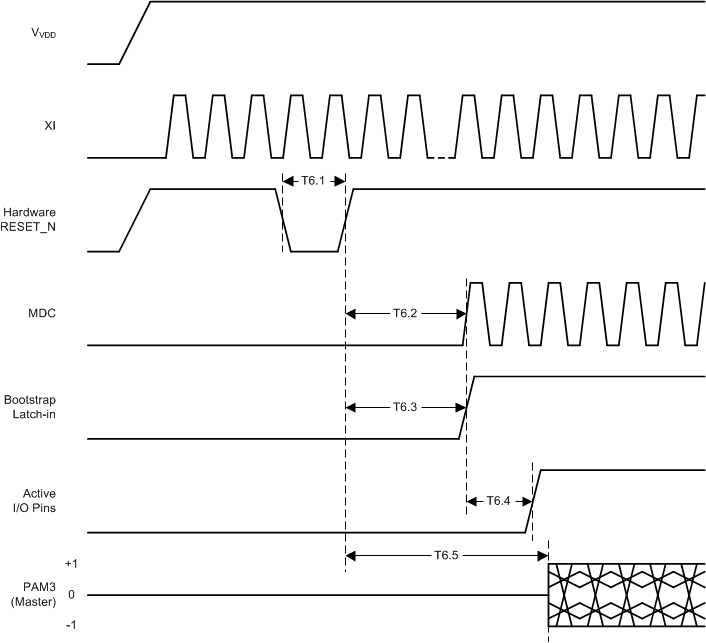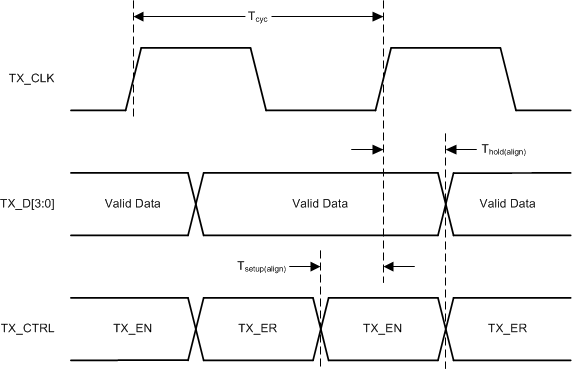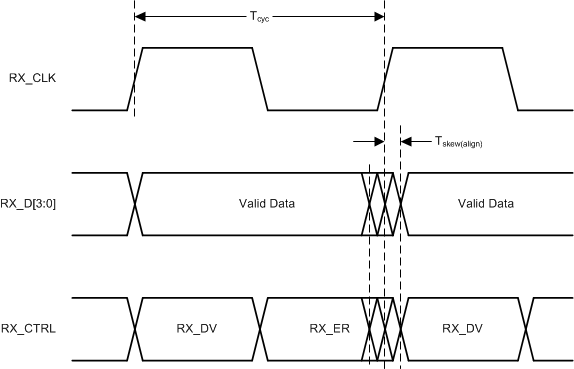SNLS604E September 2020 – November 2022 DP83TG720S-Q1
PRODUCTION DATA
- 1 Features
- 2 Applications
- 3 Description
- 4 Revision History
- 5 Pin Configuration and Functions
- 6 Specifications
-
7 Detailed Description
- 7.1 Overview
- 7.2 Functional Block Diagram
- 7.3 Feature Description
- 7.4
Device Functional Modes
- 7.4.1 Power Down
- 7.4.2 Reset
- 7.4.3 Standby
- 7.4.4 Normal
- 7.4.5 Sleep
- 7.4.6 State Transitions
- 7.4.7 Media Dependent Interface
- 7.4.8 MAC Interfaces
- 7.4.9 Serial Management Interface
- 7.4.10 Direct Register Access
- 7.4.11 Extended Register Space Access
- 7.4.12 Write Address Operation
- 7.4.13 Read Address Operation
- 7.4.14 Write Operation (No Post Increment)
- 7.4.15 Read Operation (No Post Increment)
- 7.4.16 Write Operation (Post Increment)
- 7.4.17 Read Operation (Post Increment)
- 7.5 Programming
- 7.6 Register Maps
- 8 Application and Implementation
- 9 Power Supply Recommendations
- 10Compatibility with TI's 100BT1 PHY
- 11Layout
- 12Device and Documentation Support
- 13Mechanical, Packaging, and Orderable Information
Package Options
Mechanical Data (Package|Pins)
- RHA|36
Thermal pad, mechanical data (Package|Pins)
- RHA|36
Orderable Information
6.7 Timing Diagrams
 Figure 6-1 Power Up Timing
Figure 6-1 Power Up Timing Figure 6-2 Reset Timing
Figure 6-2 Reset Timing Figure 6-3 RGMII Transmit Timing (Internal Delay
Enabled)
Figure 6-3 RGMII Transmit Timing (Internal Delay
Enabled) Figure 6-4 RGMII Transmit
Timing (Internal Delay Disabled)
Figure 6-4 RGMII Transmit
Timing (Internal Delay Disabled) Figure 6-5 RGMII Receive
Timing (Internal Delay Enabled)
Figure 6-5 RGMII Receive
Timing (Internal Delay Enabled) Figure 6-6 RGMII Receive
Timing (Internal Delay Disabled)
Figure 6-6 RGMII Receive
Timing (Internal Delay Disabled) Figure 6-7 Serial Management
Timing
Figure 6-7 Serial Management
Timing